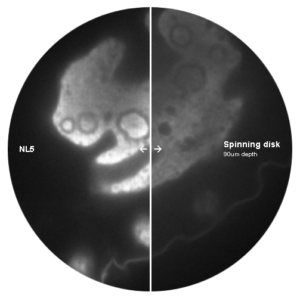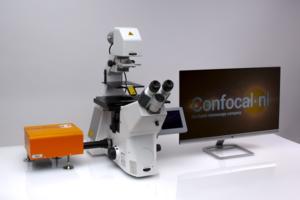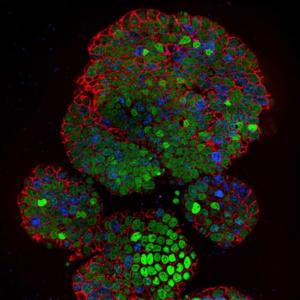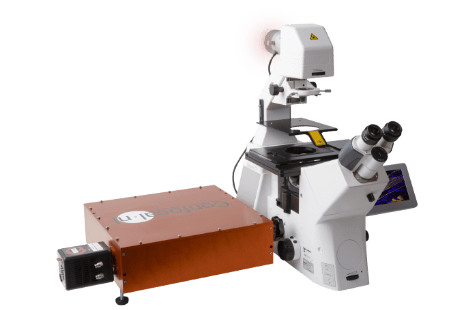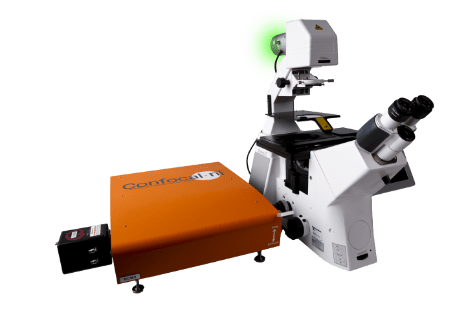 Lasers & Optical Fibers Technologies
Lasers & Optical Fibers Technologies
NL5 Slit Scanning Confocal Microscope VIS / Microscopes imaging
The NL5 uses vintage technology from the eighties, now combined with modern cutting-edge digital technology, to create a fast confocal microscope with high resolution and perfect sensitivity. A slit pinhole, together with an extremely sensitive sCMOS camera as detector, make NL5 the perfect tool for fast and deep 3D live cell imaging
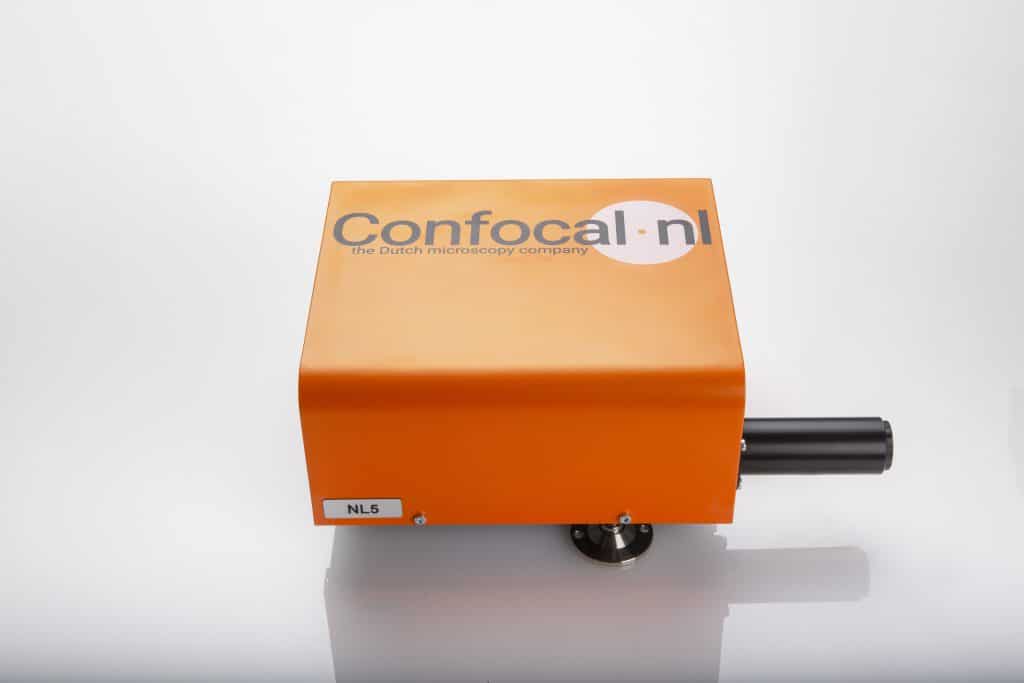
NL5 Slit Scanning Confocal Microscope VIS summary
Slit scanning confocal systems are commonly used, but their speed is limited. NL5 contains a slit pinhole that increases acquisition speed dramatically by scanning a full line at a time instead of a point. Due to the speed of the scanner, your samples will not be exposed to the laser for a long time, preventing photobleaching and phototoxicity. In addition, the high quantum efficiency of the modern sCMOS camera conjoined with NL5, allows for utilizing low laser power. Therefore, a high signal-to-noise ratio image can be captured without signs of phototoxicity or bleaching.
The new NL5+ module have been upgraded with a motorized 6 positions filters which improve its speed from 25 fps to 75 fps!
Contact us
for more informations
- Fast scanning confocal microscope
- High resolution and low phototoxicity
- Ideal for deep 3D live cell imaging
- Compact and very easy to use
- Keep widefield capabilities with motorized bypass
- Convert your existing widefield fluorescence microscope into a fast and highly sensitive confocal 3D imaging microscope with NL5
- High-content screening
- Single cell imaging
- Neural communication and axonal
- transport
- Vesicle transport
- Protein dynamics
- Fast live cell dynamics
| NL5 | NL5+ | |
| Emission filters | Not installed (upgradable) | Motorized 6 positions |
| Speed | 25 fps (full frame) | 75 fps (2048x512) & 55 fps (2048x2048) |
| with camera Kinetix Teledyne | ||
| Detector | Camera (sCMOS) | Camera (sCMOS) |
| Resolution | 170nm (after deconvolution) | 170nm (after deconvolution) |
| Sensitivity | Up to 95% QE | Up to 95% QE |
| FOV | 330×330µm (40x, magnification) | 330×330µm (40x, magnification) |
| Optimized for | 40-100x | 40-100x |
| Scanner | Digital (closed-loop) | Digital (closed-loop) |
| Wavelength | VIS (400-700) | VIS (400-700) |
| Software | Micromanager, Inscoper, Volocity, NIS Elements | Micromanager, Inscoper, Volocity, NIS Elements |
| Integration | API | API |
| PSF for deconvolution with | Microvolution | Microvolution |
| Bypass mode | Yes (motorized) | Yes (motorized) |
Slit pinhole advantages versus spinning-disk systems:
Volvox autofluorescence 561 excitation channel. Image acquired 90 microns away from the coverslip 100x 1.5 objective was used with both systems.
